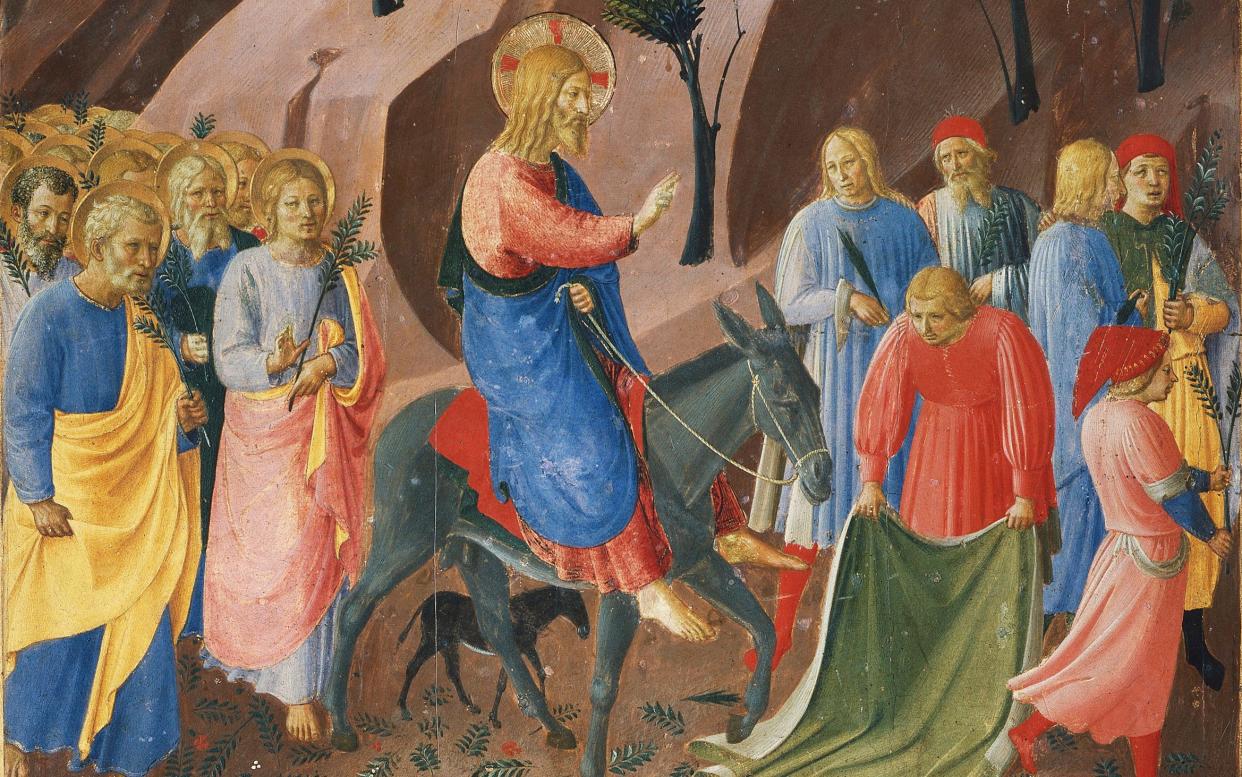Sacred Mysteries: Christ’s entry via a rainy English churchyard

A striking detail about Palm Sunday, which falls on April 2 this year, is that people in past centuries would take bits of stick and string to church and make them into crosses while the narrative of the Passion of Jesus (his suffering and death) was being sung by clerics.
These little crosses were taken home and were reputed, in the vocabulary of modern scholars, to have apotropaic powers. That is not a word known in English before the 1880s, and merely means “turning away evil”.
I’m not sure I buy the concept as useful in a Christian context. Take holy water. In Baptism, water is believed to regenerate the candidate as a child of God. The godparent, in the case of an infant, is asked: “Dost thou, in the name of this Child, renounce the devil and all his works?” It is by reference to Baptism that blessed or holy water, as a devotional aid, is deployed; the devil is said to flee it. Is that apotropaic?
Anyway, the virtue of the Palm Sunday crosses was held to stem from their being fashioned during the singing of the Gospel on that day. The big crucifix in the church would have been veiled all Lent, but during Mass on Palm Sunday would be unveiled and revered. The singing of the Passion by three clerics in the parts of the narrator, Jesus and the crowd, might even be done from the rood loft, the wide elevated beam beneath the crucifix high above the nave.
Palm Sunday seemed to be enjoyable for medieval parishioners. In England it was beefed up by the nationally dominant rite of Sarum – the rules for services deriving from Salisbury Cathedral. The ritual procession round the churchyard was of such importance that at Walpole St Peter, Norfolk, when the church was extended to the boundary of the consecrated ground, a tunnel was built under the extension so that the churchyard procession could continue.
In the Sarum rite the procession, in remembrance of the entrance of Jesus into Jerusalem, began in two halves. One represented the crowd; the other represented Jesus and the Disciples. The latter procession carried relics of the saints and, most remarkably, the Blessed Sacrament, beneath a ritual canopy. While the rituals of Palm Sunday might involve a sort of dramatic enactment (with people dressed up as Old Testament prophets, for example, as in a mystery play), this kind of sacramental representation relied more on faith: the relics stood for saints believed to be in heaven and the Sacrament was believed to be Jesus really, bodily present.
The Palm Sunday procession served as a model for the procession at Corpus Christi, the feast honouring the Eucharist introduced in the 13th century. The Reformers had this in their sights when declaring in the 25th of the 39 Articles: “The Sacraments were not ordained of Christ to be gazed upon, or to be carried about.”
On Palm Sunday, the two processions joined up at the first “station”, at some churches (such as Hillesden, Buckinghamshire) marked by a permanent stone cross. An entertaining paper in 1980 by Nigel Davison (1929-2009) examined the question of whether the procession went clockwise round Salisbury Cathedral or anti-clockwise. He concluded that it changed over time.
What would have been memorable for parishioners, who brought their “palms” of yew, box or willow, would have been the spring outdoor procession (perhaps rained upon) with choirboys on a tower or high scaffold singing Gloria, laus et honor: “All glory, praise, and honor / To thee, Redeemer, King, / To whom the lips of children / Made sweet Hosannas ring.”

 Yahoo News
Yahoo News 
